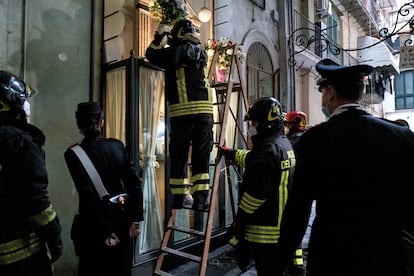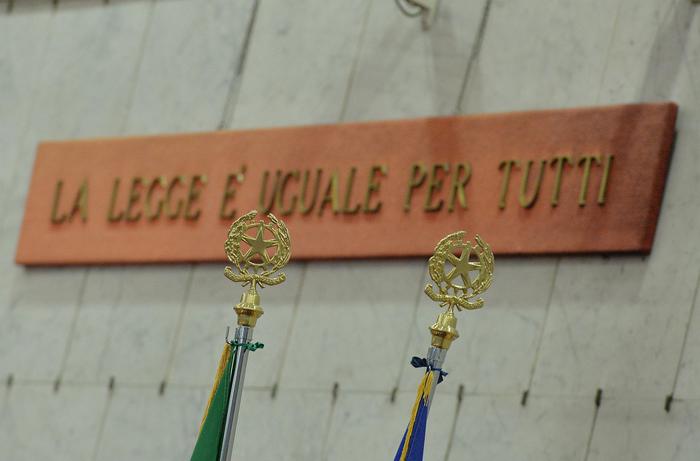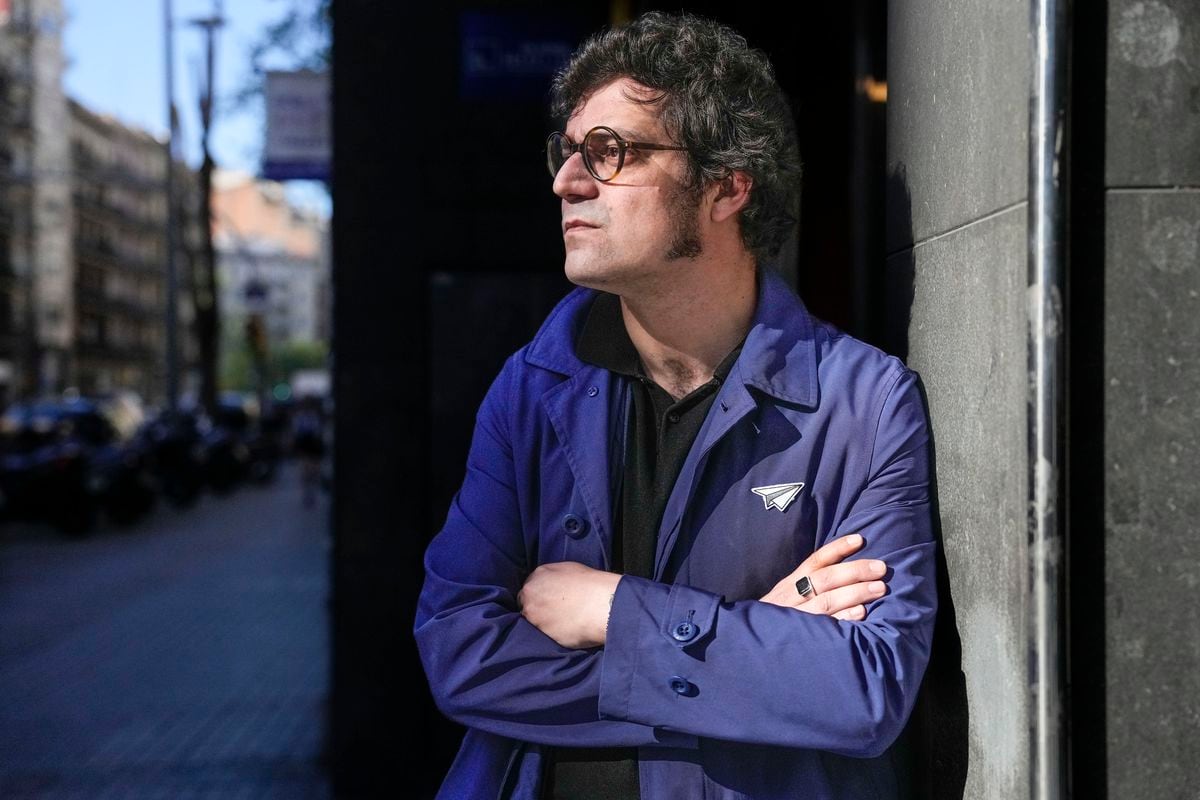Emanuele Sibillo, son of a humble family of manger artisans, became the prince of organized crime in the center of Naples at just 17 years old. He had no godparents or great resources. But in a short time, he managed to form a gang of teenagers aboard rigged scooters, thirsty for lead and hungry for expensive sneakers, who seized power from the traditional families of the city center camorra. The alleys of Forcella, Tribunali or San Gaetano became a forbidden territory for the other clans. But things soon went awry. 60 kids died in two years and another 40 were sentenced to 500 years in prison in a historic process known as the Paranza dei Bambini, of which Roberto Saviano wrote a book and a movie was made. Sibillo,Known as ES17 and thus remembered in the graffiti of the neighborhood, he died in July 2015 on his way to the hospital with two bullets in the back fired by members of the rival Buonerba clan when he was only 19 years old. The altar that reminded him, turned into the funerary monument of an entire historical process of the Neapolitan crime, was removed yesterday from the city center.
Sibillo, who wanted to be a journalist before going through the reformatory, modified the order of the Camorra for a brief period.
His feat inaugurated the category that would later become known in Italy as a
baby boss
.
A changing of the guard led by boys between 15 and 20 years old, more concerned with showing their weapons and their fights on Instagram than with hiding them in false funds, as the old criminal canon commanded.
The new customs sowed chaos in the city and confusion among the traditional bosses.
And for a while, it worked.
Celebratory chapel of Emanuele Sibillo, head of a youth band Paolo Manzo
Sibillo allied himself with the nephews of the Giuliano, the clan that reigned in the Forcella neighborhood and that had been humiliated. He set up a gang full of guys with nicknames like Polpetta (meatball) or Malegno (evil). The aesthetics changed: tattoos, long beards, plastic glasses. He dyed his exploits with a certain social idealism and freed the merchants in his neighborhood from paying the
pizzo
—The mafia tax — that they had been dealing with the old families for years.
Many saw him as a sort of Robin Hood of crime.
So when he died, some shopkeepers made a collection to pay for an ostentatious altar in the courtyard of his house.
A pilgrimage site - many of these merchants still crossed themselves as they passed by as if it were a saint - that was dismantled on Wednesday morning by the carabinieri as part of an operation that aims to rid Naples of places of worship of crime and of all kinds of representations that enhance criminal memory.
More information
The stray bullets of the Camorra
The order, however, came this time from the city prosecutor's office because it was a private place —the courtyard of the building where Sibilo's family lives—, impossible for the City Council to access without the court order. Alessandra Clemente, councilor of the Consistory, future candidate for mayor and victim of the Camorra (her mother was murdered in the middle of the street), explains on the phone that it has been done “because it was an element of celebration carried out within the scope of a settled family nucleus in the activity of the camorra in the center of Naples ”. “The City Council agrees and we participate in all the activities of this type that are carried out. Everything that exalts organized crime must be removed. Today there are almost 20 operations already carried out in the city. And some more are planned ”, he points out.
The response of the residents, who on Wednesday already waited for the police before seven o'clock to rebuke them and protect the chapel, has been uneven with other similar initiatives. In the case of Sibillo, as a friend of his tells this newspaper, the arrest of the 21 people and the withdrawal of the chapel were already expected. “There has been some resistance, but the carabinieri have quelled it. Most of the gang is already in jail, ”he explains. In the case of Ugo Russo, on the other hand, whose mural still presides over one of the corners of Quartieri Spagnoli, there was a popular uprising when a municipal advisor proposed to eliminate it. Russo had been shot dead by an off-duty carabinieri who responded with his pistol when the boy tried to steal his watch. The boy, 17 years old and the son of a humble family,He did not belong to any of those bands, and Clemente herself now distinguishes her case from the murals or altars that have been removed.
The elimination of these
celebratory
elements
of young criminals was dictated by the provincial commission of public order and security on March 4.
In addition to the Sibillo chapel, an altar dedicated to Luigi Caiafa, a 17-year-old boy killed by the police while attempting an assault, was also dismantled.
The disappearance of the great capos of the Camorra, the Giuliano, the Cutolo, the Di Lauro, Contini ..., dead or sentenced to solitary confinement, created a crack in the power of the
Camorra
where the youth gangs and dozens of boys who grew up sneaked imitating the stele of Sibillo.
Firefighters remove the chapel of the deceased young criminal Emanuele Sibillo Paolo Manzo
The case of ES17 is the most paradigmatic. The altar, a kind of chapel whose doors were made of wrought iron with his initials and where the ashes of the deceased were kept, could have been used for criminal purposes, it is clear from the investigations of the prosecution. In fact, the operation has been accompanied by 21 arrests of members of the still active Sibillo clan, led from prison by his brother Pasquale, who had planted explosives in some businesses protected by the rival family, the Mazzarella clan. Something that Sibillo's friends deny to this newspaper. “It is all an invention of the prosecution to be able to remove the altar. They say that merchants passed by here and knelt down. It's an invention". But now Naples, a city that always celebrated the dead in the corners of its alleys,has decided to erase his memory.















